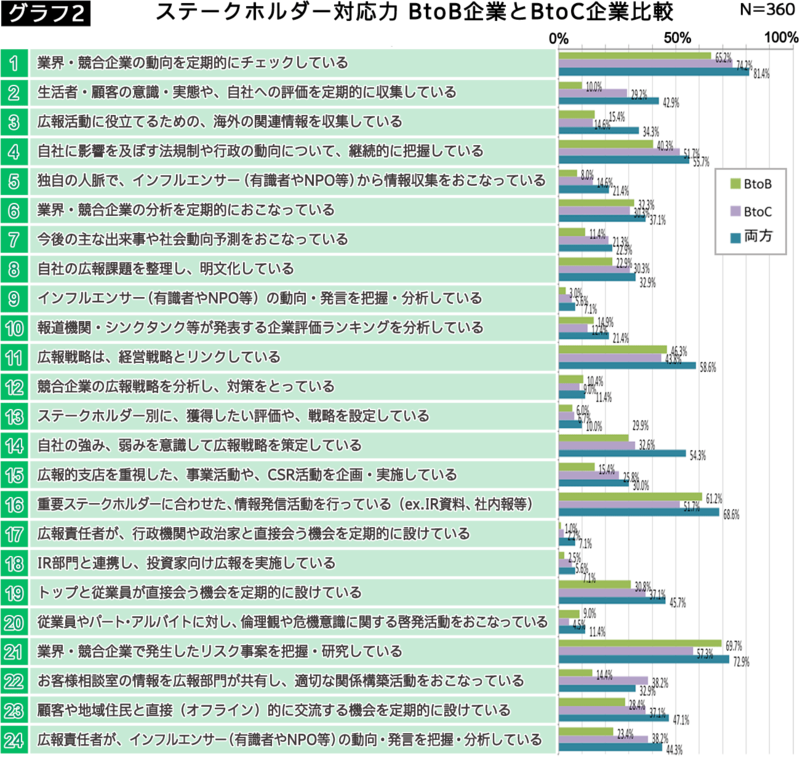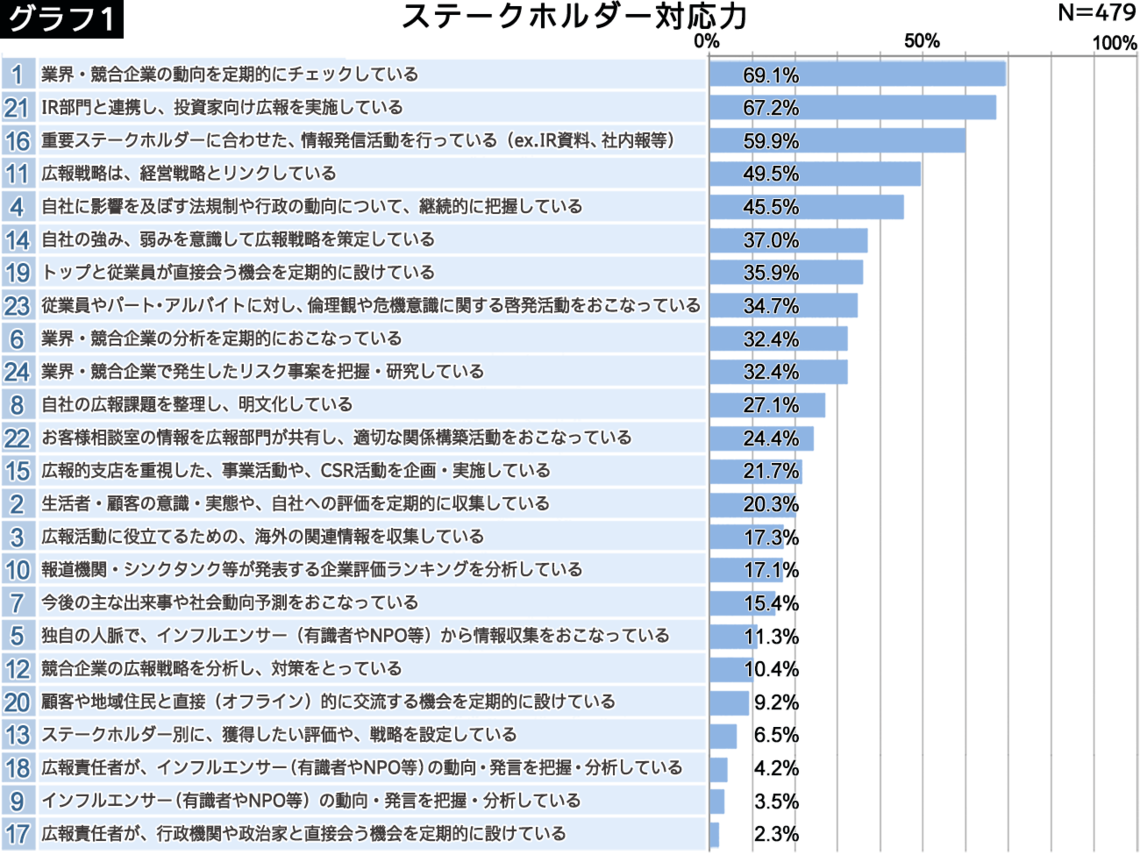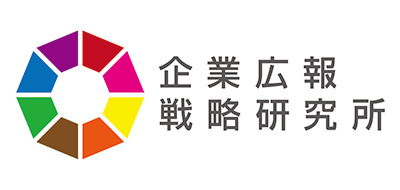It goes without saying that building positive relationships with stakeholders is the fundamental principle of public relations. In this fourth installment, we examine corporate "stakeholder engagement capabilities" through our institute's " First Survey on Corporate Public Relations Activities, " conducted among 479 listed Japanese companies.
■Two-Way Information Exchange with Stakeholders
Corporate stakeholders primarily encompass five key areas: ① Shareholders and investors, ② Business partners and suppliers (including industry peers and competitors), ③ Employees (including part-time and temporary staff), ④ Customers (including consumers and citizens), and ⑤ Local communities (including government, administrative bodies, and municipalities).
Looking at "Stakeholder Engagement Capability" in Graph 1, the top three practices—implemented by 60-70% of companies—are: "Regularly monitoring industry and competitor trends," "Conducting investor relations outreach in coordination with the IR department," and "Tailoring information dissemination activities to key stakeholders." The overall trend shows that information dissemination is central for investors and employees, while information gathering is primary for industries, governments, and administrations. However, ideally, two-way information exchange should be maintained with all stakeholders.
■Comparing B2B and B2C Companies
When comparing B2B and B2C companies in terms of this "stakeholder responsiveness" (Graph 2), B2C companies tend to be more active in overall PR. However, specifically regarding stakeholder responsiveness, B2B companies also show a strong commitment.

Let's examine the items with particularly high implementation rates among B2B companies by industry. "Collaborating with the IR department to conduct investor relations" is implemented by over 80% of companies in "Steel & Non-ferrous Metals" and "Transportation Equipment & Precision Instruments." "Conducting information dissemination activities tailored to key stakeholders" is implemented by 70-80% of companies in "Transportation Equipment & Precision Instruments," "Electrical Equipment," and "Textiles, Chemicals & Medical." Approximately 60% of companies in "Transportation/Warehousing" and "Electrical Equipment" implement "a PR strategy linked to the management strategy." This indicates that larger companies tend to have more robust stakeholder engagement.
■Corporate Communication Starts with Collaboration Across Departments
Graph 3 shows survey results for "PR systems and other PR activities." Focusing on areas related to internal collaboration – "The PR department and advertising department collaborate," "I believe internal departments understand the work of the PR department," and "A database or intranet for sharing PR-related information is established" – the scores are not particularly high.
In stakeholder engagement within PR practice, collaboration with departments directly responsible for specific stakeholders—such as IR, external affairs, human resources, and customer service—is crucial. The recent increase in companies adopting department names like "Corporate Communications Department" reflects this situation. To achieve positive public relations with all stakeholders, corporate communications departments are required to closely collaborate with the departments responsible for each stakeholder and implement strategic corporate communications activities.
About the Corporate Communication Strategic Studies Institute
The Corporate Communication Strategic Studies Institute (CSI) is a research organization within Dentsu Inc. Public Relations. It collaborates with experts in corporate management and public relations (including university professors and researchers) to conduct surveys, analyses, and research on corporate public relations strategies and organizational structures.




